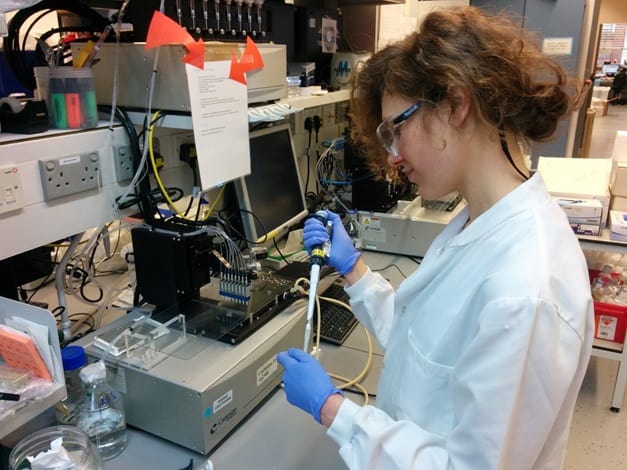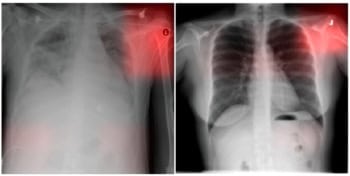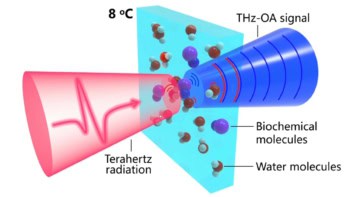
Determining the structure of a virus without having to isolate it from cells first is the dream of many scientists. Helen Duyvesteyn and her colleagues from the University of Oxford, Diamond Light Source and the University of Helsinki are working to make this dream come true.
In their recent study (Scientific Reports 10.1038/s41598-018-21693-3), the researchers described how viruses grew and formed crystalline arrays inside cells. Thanks to the very bright signal of an X-ray free-electron laser (XFEL), they were able to obtain structural information about the viruses directly in the intact cell. Without the need to isolate viruses from the cells that they were grown in, they could avoid potential damage of the virus.
In living cells, viruses form crystals so small that only a microfocus beamline at a synchrotron or an XFEL laser can be used to study them. Of these two, the XFEL is over a billion times brighter, making it the more potent light source.
Analysing virus crystals within cells does, however, also decrease the signal-to-noise ratio, due to the contribution of other cell components. Moreover, the team recorded data using a jet stream of cells flying through the XFEL beam, with images taken at fixed time point – no matter whether there was a cell with viral crystals in the beam or not. This resulted in the recording of thousands of images, from which the ones containing relevant information had to be extracted.
Separating the wheat from the chaff
The researchers realised that images containing the valuable diffraction patterns were all less than 0.3 MB in size. This is because jpeg files compress in size depending upon the information content of the image. Based on this finding, they were able to discard 72% of the images recorded. To ensure that no information was lost, the researchers manually checked a large number of the discarded images and, indeed, found no diffraction patterns on any of them. Of the remaining smaller images, 7.2% showed diffraction patterns. This represented 680 images – and the researchers then recorded every single spot on each one by hand.
The resulting data indicated that the particles in the crystals were so-called procapsids, empty virus shells that contain no DNA. Four virus particles were found per 500 Å. While the obtained data were not of high resolution, the experiments showed that in cellulo crystallization of viruses holds promise for studying viruses without having to isolate them. The authors also hope that their proof-of-concept experiments will enable the investigation of viruses that can only be studied inside living cells.
Many parameters to optimize
Duyvesteyn and her colleagues identified a number of factors that could be improved in the future to obtain better data. A 100-fold improvement of the signal-to-noise ratio can be achieved by optimizing the size of the jet of fluid delivering the cells to the beam of light, and a 25-fold improvement by optimizing the size of the light beam. Alternatively, a method called acoustic droplet ejection technology could be used instead of a fluid jet to deliver the cells into the laser beam.



